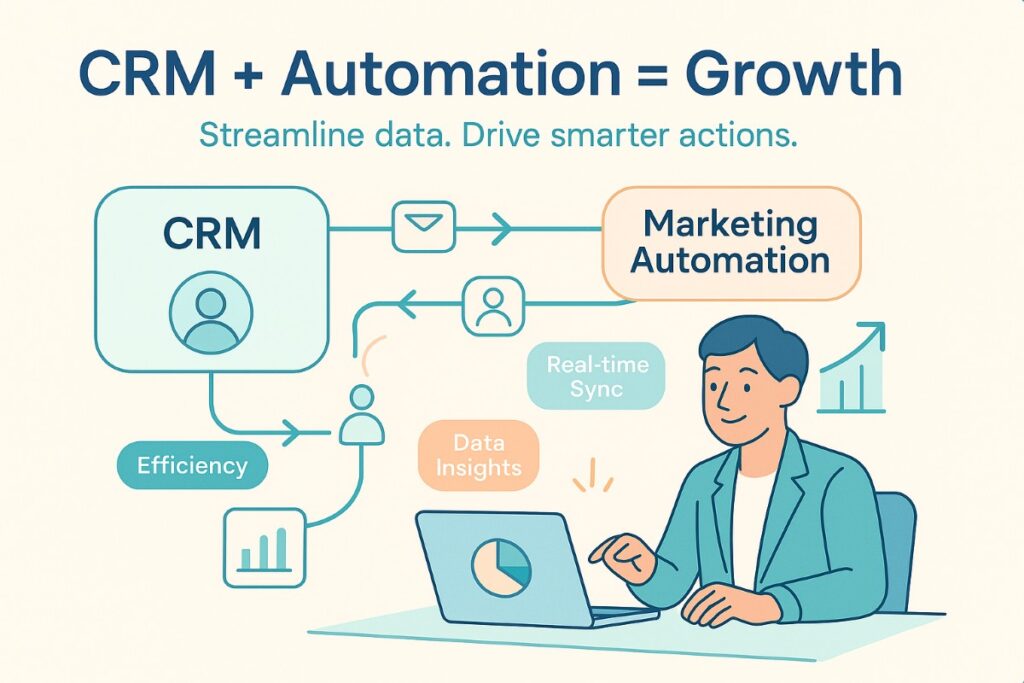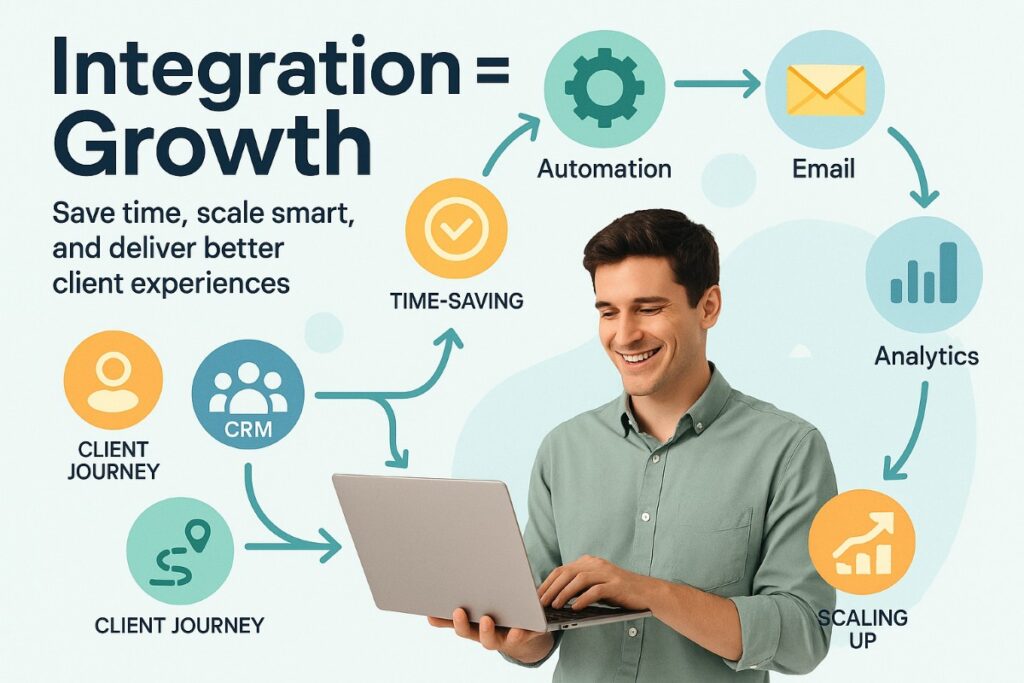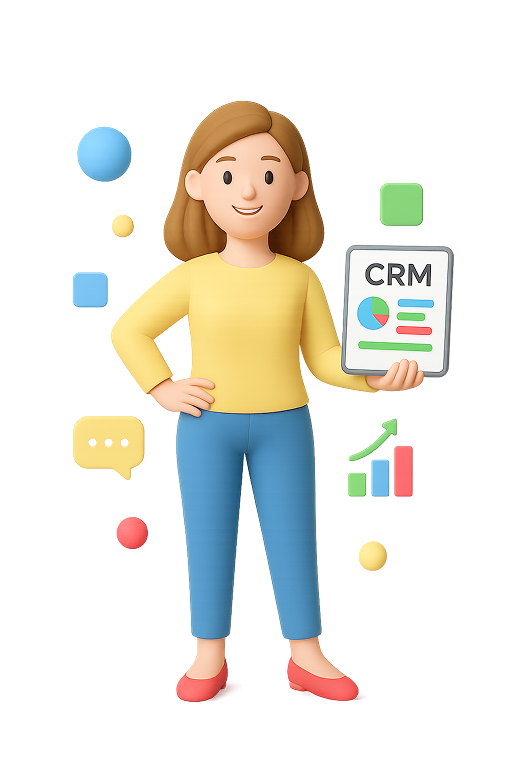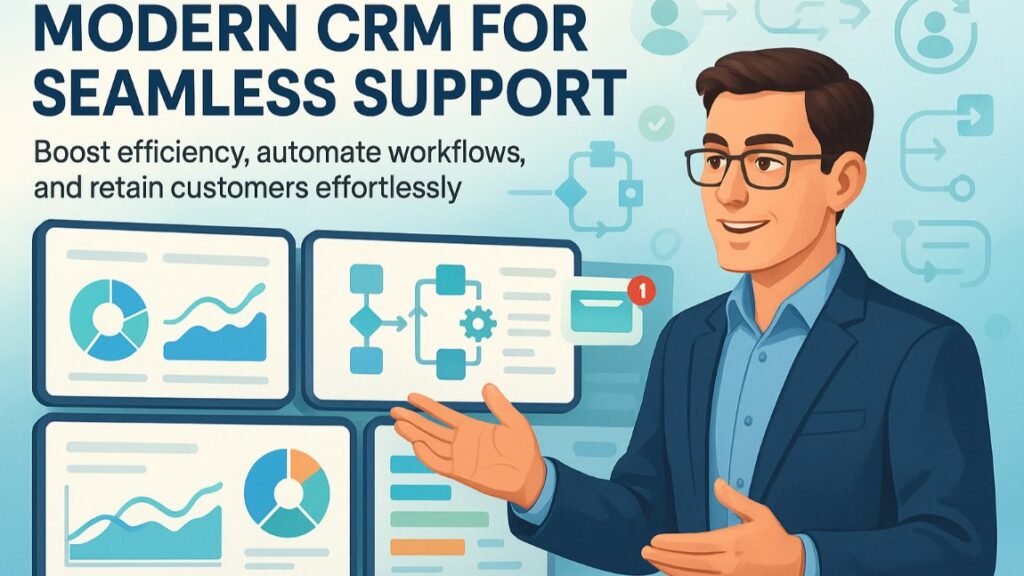Running a small agency is all about balance. You’re juggling multiple clients, campaigns, and deadlines—often with a lean team and limited resources. In that environment, efficiency isn’t just nice to have, it’s essential.
Two of the biggest tools in your toolbox are your CRM system and your marketing automation platform. They serve different purposes, but when they work together, you can save time, improve client results, and grow your agency without hiring more staff.
In this article, we’ll look at why integration matters, what challenges agencies face without it, and how platforms like OutRightCRM simplify the process.
CRM and Marketing Automation: What They Do

- CRM (Customer Relationship Management): Stores client and lead details, tracks communication history, and helps you manage opportunities.
- Marketing Automation: Handles repetitive tasks like email follow-ups, social media scheduling, and lead nurturing.
On their own, each tool is useful. Together, they’re powerful because data flows in both directions. Your CRM provides context, while your automation platform ensures timely action.
The Problem with Separate Systems
If you’re using different tools for CRM and automation, you’ve probably hit some roadblocks:
- Duplicate data entry: Manually adding the same contact in multiple systems.
- Incomplete reporting: Marketing data in one place, sales data in another.
- Missed opportunities: A hot lead in your CRM may never trigger an email sequence if the tools don’t sync.
This slows you down and creates gaps that affect both your agency and your clients.
Why Integration Matters for Small Agencies

1. Save Time and Reduce Errors
When your CRM and automation are connected, updates happen automatically. Add a new lead, and they’re instantly entered into your nurture campaigns. That cuts out manual data entry and reduces mistakes.
2. Get a Full Picture of the Client Journey
With integration, you can see the entire path: from a visitor filling out a form, to receiving marketing emails, to speaking with your sales team. That makes reporting to clients much easier and more transparent.
3. Scale Without Adding More People
Automation doesn’t replace your team, but it frees them up. Instead of chasing down lists or manually scheduling follow-ups, they can focus on strategy and creative work—the things that add real value for your clients.
👉🏽 For a deeper look at how automation platforms can drive growth, check out our guide on marketing automation tools to boost business
A Simple Comparison
Here’s a quick side-by-side of working with separate systems versus an integrated solution:
| Feature | Separate Tools | Integrated System |
|---|---|---|
| Data Entry | Manual in each platform | Automatic sync |
| Reporting | Fragmented, incomplete | Unified, full-funnel view |
| Lead Nurturing | Limited or delayed | Instant, based on CRM updates |
| Time Spent Managing Tools | High | Lower |
Backed by Research
Research shows that agencies and businesses that integrate marketing automation with CRM report measurable gains. According to a study shared by Invesp, about 80% of users of marketing automation software see an increase in leads, and 77% see conversions improve.
Final Thoughts
For small agencies, the difference between struggling with fragmented tools and running smoothly often comes down to integration.
By bringing CRM and marketing automation together, you save time, reduce errors, and provide better results for your clients. Starting small is fine, but as your agency grows, an integrated system like OutRightCRM and SeoSamba can help you deliver consistent results without adding extra overhead.
At the end of the day, integration isn’t just a technical upgrade—it’s a smarter way to run your agency.




%201.png)

%201.png)

%201.png)

